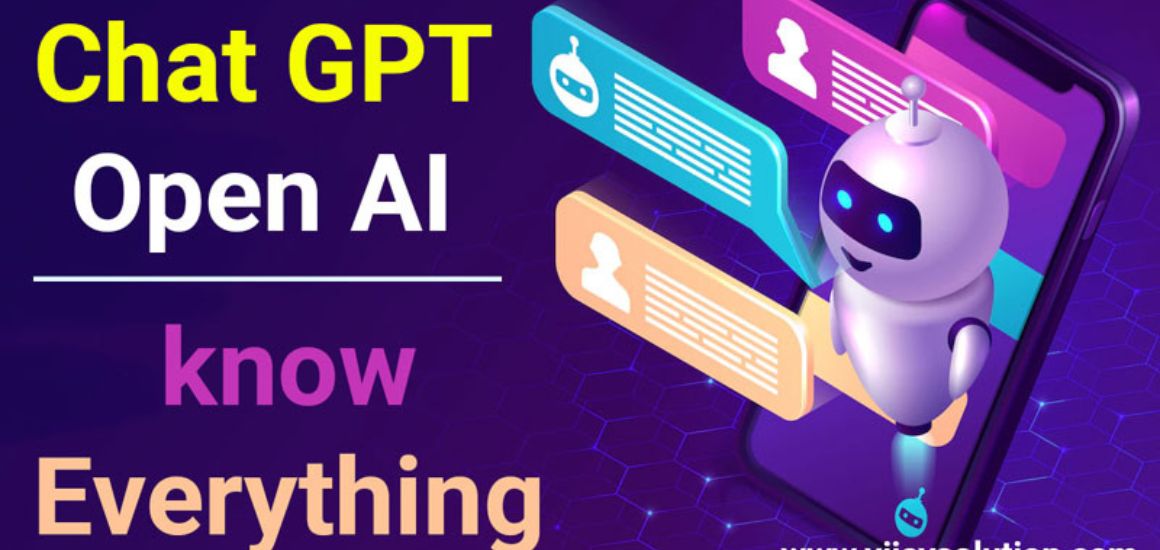Get Your Hands On With The Newest Tech & Find Out How To Build Your Own ChatGPT Site.

We live in a digital age today. Businesses constantly seek new and innovative ways to engage with customers and provide a more personalized experience. The competition is at its highest, and one way to achieve this is through chatbots on websites. Chatbots can provide users quick answers to their questions and recommendations and even facilitate transactions without human intervention. So how to build your chatGPT site?
Here’s the deal:
How to build your own ChatGPT site?
If you are thinking about how to build your own ChatGPT site, there are a few key steps you will need to follow to get started. Whether you are willing to create a chatbot for your website or build your own WhatsApp bot, you can follow these steps to build a system to engage with your customers and provide a more personalized experience.
Deep learning for success
Deep learning is a powerful technique that can help your chatbot understand and respond to various user inputs, which makes it possible to create highly personalized and engaging interactions. How to build your chatbot using deep learning?
You must first take a few critical steps.
Choose your development platform.
There are many different platforms and tools available for building chatbots. They each have their unique features and capabilities. Some popular options are TensorFlow, PyTorch, and Keras. These platforms offer various pre-built algorithms and models to help you get started quickly. They also provide powerful tools for customizing and fine-tuning your chatbot over time.
Train your chatbot.
When you train your chatbot, you must feed it a large dataset of text inputs and corresponding outputs, allowing it to learn and adapt based on user interactions over time.
Build your chatbot interface.
Next, you should create a chatbot interface that allows users to interact with your chatbot naturally and intuitively. You can use text inputs and other types of user inputs.
You can choose from various interfaces, ranging from simple text-based chat interfaces to more advanced voice and visual interfaces.
Deploy your chatbot.
Once you are fully trained and have finished your chatbot’s interface, you can deploy it to your target audience.
Try a WhatsApp chatbot.
Creating your own WhatsApp bot is a fantastic method to interact with your audience and provide them with quick and convenient access to your products, services, or other types of content. How to create your own WhatsApp bot? Follow this step-by-step guide.
What is your development platform?
To build your own WhatsApp bot, you must choose a development platform that supports WhatsApp integration. Some popular options available are Twilio, Nexmo, and Infobip. These platforms provide tools and APIs that allow you to build and deploy your WhatsApp bot quickly and easily.
Design your bot conversation flow.
Next, you need to map out the different types of interactions and responses that your bot will provide based on the types of questions or requests your users will likely have.
To successfully plan the flow of your bot interaction, it’s essential to understand your users’ needs and preferences clearly. You can conduct user research or engage with your audience directly to gather insights and feedback on what content or information they want to see from your bot.
Set up your messaging interface.
After that, you should create a WhatsApp Business account and configure your messaging settings to enable your bot to receive and respond to user messages. To set up your messaging interface, you’ll need to follow the instructions provided by your development platform, which may involve integrating your WhatsApp account with a chatbot builder or using a custom API to connect your bot to the WhatsApp platform.
Train your chatbot.
You must provide your bot with a dataset of sample user inputs and corresponding outputs, allowing it to learn and adapt over time based on user interactions.
Launch and monitor your chatbot.
Finally, once you have trained your bot, you can launch it and engage it with your audience.
Do you have a website?
Using a chatbot, you can provide your users with a more interactive and personalized experience on your website. Chatbots can help answer common questions, provide recommendations, and even facilitate transactions without human intervention.
Here is how to build a chatbot for a website.
What is the purpose of your chatbot?
You must first decide what specific tasks or goals you want your chatbot to accomplish. Do you want it to provide customer support, help users find information, or facilitate transactions?
Find a chatbot builder.
Platforms like Chatfuel, Tars, and ManyChat provide a range of tools and templates to help you build and deploy your chatbot quickly and easily.
Design your chatbot conversation flow.
Do the same here as what you did to design your bot conversation flow in making a WhatsApp chatbot.
Integrate your chatbot with your website.
Add the chatbot widget or plugin to your website and configure the settings to enable your chatbot to receive and respond to user messages. To integrate your chatbot with your website effectively, you may need to work with a web developer or follow the instructions provided by your chatbot builder platform.
Train and launch your chatbot.
Here you need to follow the same steps you did in the WhatsApp chatbot to train and launch your chatbot on the website.
Conclusion
Building a chatbot can be a highly effective way to engage with your users and achieve your business goals. Following the steps we discussed in this article, how to build your own ChatGPT site, you can design, build, and launch a chatbot that provides value to your users and helps you achieve your desired outcomes.